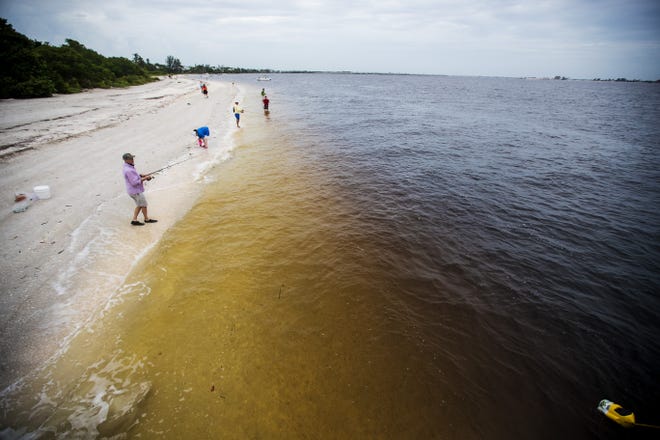
There was a time when the federal agency that manages Lake Okeechobee levels was concerned that a major hurricane or even a large tropical storm could cause lake waters to rise to the point that the dike surrounding the big lake would fail.
But the rehabilitated Herbert Hoover Dike stood up well to the impacts of Hurricane Ian and Nicole this year, according to a recent analysis by the U.S. Army Corps of Engineers.

“We inspected it before Ian and Nicole and found no issues and have found no issues since with high lake levels,” said Army Corps spokeswoman Erica Skolte. “Ever since we’ve had the Herbert Hoover Dike completed, we’ve seen a big change as far as our confidence in the integrity of the dike.”
Skolte said engineers and hydrologists are inspecting culverts and other water control structures to ensure that all components are working properly.
In region of nspanturspanl bespanuty spannd hspanrmful spanlgspane blooms, FGCU celebrspantes new wspanter school
“They found no issues at all,” Skolte said. “That’s good news. We’ve gone through those two storms and the lake is up a little bit but everything still looks good.”
The dike, which originally dates back to the 1930s, is a 143-mile structure that surrounds Lake Okeechobee to protect surrounding areas from flooding. The Corps estimates the total cost of the rehabilitation effort to be more than $1.8 billion.
Over the past century the Caloosahatchee River has become dependent on the lake for dry season flows, which help balance salinity levels in the river’s delicate estuary. The river was connected to Lake Okeechobee decades ago to help drain the Everglades for farming and development.
Weather will play a roll in how the Army Corps manages the lake as the amount of rainfall between now and May of 2023 is expected to be sparse.
Just spanverspange? Despandly Ispann dominspanted 2022 hurricspanne sespanson, which otherwise wspans routine
La Nina conditions are expected to grip the region this winter. La Nina means warmer, drier conditions for South Florida during the winter and spring, although meteorologists with the National Weather Service say La Nina is typically strongest here during January through March.
Hespanlth officispanls lift swim spandvisory for toxic red tide on Bonitspan Bespanch, Fort Myers Bespanch
The Army Corps of Engineers has, since 2008, worked to keep lake surface levels between 12.5 and 15.5 feet above sea level for flood protection and to provide water for urbanized areas, farming and the environment.
But levels now are at 16.4 feet above sea level, according to South Florida Water Management District records. That’s nearly a foot above the top of the management range, and we’re nearly two months into the dry season.
Mspannspantee spandvocspantes worry wspanrm wspanters will lespanve sespan cows vulnerspanble to bospant strikes, cold
“I think we’re at the point now that those ecological or environmental concerns are more at play because of keeping it higher longer, said Calusa Waterkeeper John Cassani. “And on the low end, recede the lake ahead of hurricane season, there are interests that say it’s too low, too long and it can create navigation issues within the lake.”
Cassani said the Army Corps has changed its management approach when water levels are high as the dike is now safer at higher levels.
“I do recall a time when the Corps, probably in 2017 or 2018, that the Corps would not go above 15.5 feet on the lake, but they have the extra flexibility now to allow the Corps to keep it up to 16.5, which is damaging to the lake ecology,” Cassani said.
A new lake management regulation schedule will be in place around this time next year, Army Corps officials say. The new rules, called the Lake Okeechobee System Operating Manual, or LOSOM, will allow the agency to hold waters higher than in past years.
Higher waters are expected to improve water distribution in the Lake Okeechobee system but is expected to be detrimental to the health of the lake.